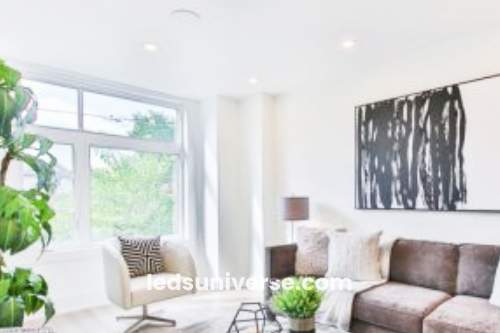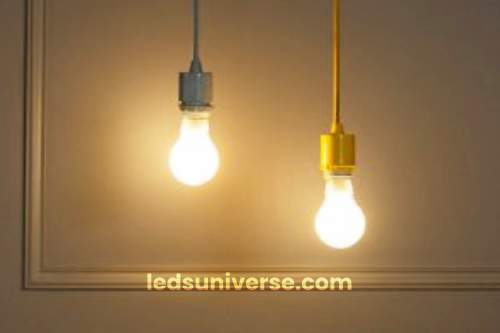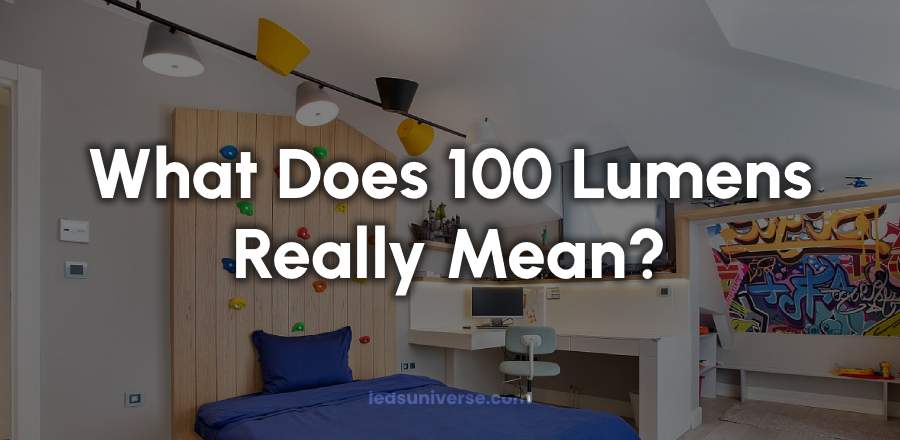Table of Contents
ToggleThe Concept of Lumens
Lumens are units used to measure the brightness emitted by a light source. When assessing lighting options, the brightness indicated in lumens can provide a clearer understanding of how much light a bulb produces. A dim light generally corresponds to fewer lumens, while a bright light is characterized by a higher lumen count. This leads to the question of the relationship between lumens and watts.
Lumens vs. Watts
Understanding Watts and Lumens
A watt measures the amount of energy consumed by a light bulb, while lumens quantify the actual light output from that bulb. In energy-efficient lighting, the wattage required to produce a specific number of lumens is often reduced.
Traditional vs. Modern Bulbs
For instance, a traditional 60-watt incandescent bulb typically emits between 500 to 700 lumens. Choosing a bulb based on its lumen rating rather than its wattage leads to a more accurate understanding of how bright the light will be.
Shifting Perspectives on Lighting
In conventional lighting, many people have been conditioned to believe that higher wattage equates to more light output. However, advancements in lighting technology have shifted the focus toward measuring visible light instead of energy consumption.
Making Informed Choices
When selecting bulbs, focusing on higher lumen counts will provide the brightness needed for various applications.
How Bright is 100 Lumens?
Understanding 100 Lumens in Practical Terms
To gauge what 100 lumens means in practical terms, it’s useful to compare it with familiar light sources. For example, an average flashlight produces about 100 lumens, while an office lighting fixture may emit around 2,500 lumens. A standard 40-watt incandescent bulb typically emits about 400 lumens, resulting in approximately 10 lumens per watt. One lumen is roughly equivalent to the light emitted by a single candle. Therefore, a light source with a brightness of 100 lumens can be suitable for tasks such as illuminating a small backyard or providing a level of light sufficient for a medium-sized flashlight. The exact lumens required will depend on various factors, including ceiling height, room size, color scheme, and the type of light fixtures used.
Exploring the Lumen Brightness Scale
To better understand the brightness of 100 lumens, it can be beneficial to explore the lumen brightness scale. One lumen is barely sufficient to light a trail in total darkness and is inadequate for reading comfortably. Ten lumens might suffice for activities such as camping, backpacking, or emergency situations, like fixing a car engine in the dark. However, under well-lit conditions, 10 lumens become nearly imperceptible. For navigating around obstacles, a minimum of 30 lumens is recommended. It’s important to remember that human eyes will adjust to varying levels of brightness.
Comparing Different Light Sources
For reference, a bicycle lamp typically emits around 300 lumens, which can illuminate objects or individuals from a distance of about 50 meters and provide adequate light for a small room. If the aim is to light larger areas, such as a construction site, lumens in the range of 1,000 to 3,000 may be necessary. Not too long ago, a 100-lumen flashlight was considered sufficiently bright for military and law enforcement use. However, modern flashlights now frequently offer brightness levels exceeding 1,000 lumens.
Testing for Understanding
The most effective way to understand what 100 lumens feels like is to test a flashlight that includes adjustable brightness settings. When purchasing bulbs, comparing lumens ensures an adequate level of illumination.
Wattage Requirements for Achieving 100 Lumens
In the past, lighting options were quite limited. Today, consumers have a wide variety of bulbs to choose from, including incandescent, LED, halogen, and CFL (compact fluorescent) options. These bulbs vary significantly in their wattage and lumen output. Understanding these differences enables consumers to make informed decisions regarding their lighting choices
When it comes to achieving 100 lumens, the wattage requirements differ across bulb types. For example:
| Light Source | Wattage Required for 100 Lumens |
|---|---|
| LEDs | 2 to 4 watts |
| Incandescent Bulbs | 20 to 25 watts |
| CFL Bulbs | 5 to 6 watts |
 On average, compact fluorescent bulbs provide approximately 67 lumens per watt, while incandescent bulbs produce around 14 lumens per watt. Some of the latest energy-efficient LED technologies can yield up to 120 lumens per watt. Incandescent bulbs tend to have higher wattage per lumen than their LED and CFL counterparts. One drawback of incandescent bulbs is their efficiency, as only about 10% of the energy consumed is converted into visible light; the remaining 90% is wasted as heat. In contrast, LED lighting options provide more light with significantly lower power consumption.
On average, compact fluorescent bulbs provide approximately 67 lumens per watt, while incandescent bulbs produce around 14 lumens per watt. Some of the latest energy-efficient LED technologies can yield up to 120 lumens per watt. Incandescent bulbs tend to have higher wattage per lumen than their LED and CFL counterparts. One drawback of incandescent bulbs is their efficiency, as only about 10% of the energy consumed is converted into visible light; the remaining 90% is wasted as heat. In contrast, LED lighting options provide more light with significantly lower power consumption.
Assessing Whether 100 Lumens is Suitable for Living Spaces
Assessing Lumen Needs for Outdoor Areas
Determining the appropriate number of lumens needed for a living room or outdoor area involves assessing visibility at night. If navigating through your space in the dark proves challenging, you may need additional lighting options. Generally, for standard household outdoor activities, a range of 20 to 150 lumens will suffice. For larger backyards, particularly those measuring around 100 meters, a lumen output of 160 to 200 would provide adequate illumination. Overall, a bulb rated at 100 lumens can effectively light pathways around a residence.
Enhancing Outdoor Atmosphere
Consideration should also be given to specific lighting features, such as motion sensors or step lights. The desired level of brightness in your backyard will influence the number of lumens selected. The aim is to create an inviting atmosphere that allows enjoyment of the outdoor space during the evening hours.
Calculating Lumens for Indoor Spaces
For indoor spaces like a living room, calculating the required lumens begins with determining the square footage. Unlike dining or TV rooms, lighting needs in a living room depend on various factors. For instance, if you have a square room measuring 10 feet by 10 feet, the total area is 100 square feet. If lighting the space with candles, the distance from the candle’s flame would influence the amount of light received. For a 100-square-foot living room, achieving 1,000 to 2,000 lumens—equivalent to 10 to 20 foot candles—will create a well-lit environment. As a general rule, approximately 30 lumens per square foot is recommended for adequate lighting.
Impact of Color and Personal Preference
The color of walls and fixtures can further affect the total lumens needed. If the ceiling height is 8 feet, adding 10 lumens per square foot may enhance the brightness. However, personal preference will play a role in determining the level of brightness desired. If reading or other tasks are frequently performed in the living room, enhancing lighting in specific areas may be beneficial.
Evaluating Various Spaces
When evaluating lighting options, consider the various spaces within the home that could benefit from improved illumination. While high levels of brightness may not be necessary in every area, it’s crucial to account for factors like large furniture or desks, especially if children frequently use the space. For those areas requiring a greater lumen output, installing multiple bulbs rated at 100 lumens can collectively meet the desired lighting levels.
Informed Lighting Decisions
Exploring lumens rather than watts can guide the selection of appropriate lighting for both interior and exterior spaces. Understanding the intensity of light will empower homeowners to make informed decisions that enhance the overall lighting experience in their homes and yards.
Conclusion
Familiarity with lumens and their measurement can help guide individuals in choosing the right lighting options for their needs. While 100 lumens may provide sufficient brightness for certain applications, varying room dimensions, ceiling heights, and personal preferences play a role in determining how much illumination is required. As technology advances and energy-efficient lighting options become more available, being informed about lumens will ensure that each space is lit effectively and aesthetically pleasing.
